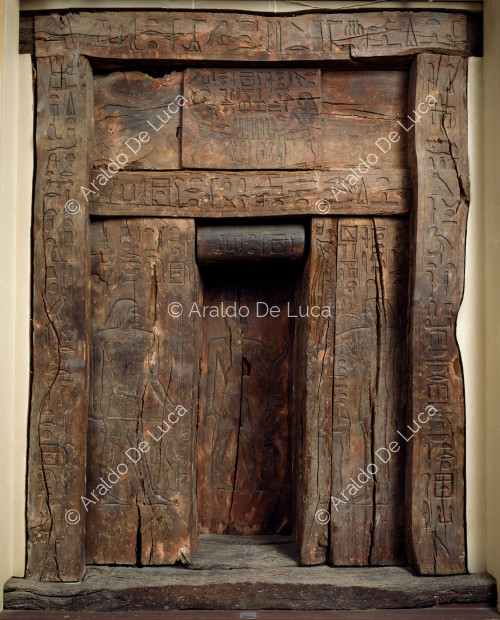False-door stele of Ika
The false-door stele was the place in the tomb where funerary offerings were placed in front of which the ka of the deceased could eat; it was usually made of stone. The one at Ika is one of the few known wooden examples that accurately reproduces all the parts of a real door: the chamber, surmounted by a cylinder representing the mat that was unrolled to close two lateral recesses surmounted by a first architrave, in turn surmounted by a rectangular aedicule, and two lateral posts on which a second architrave rests; Ika bears the titles of Priest uab (the pure priest) and Governor of the Great House and is portrayed both in the doorway with his son Tjenty, and in the left recess with his son Abedu; in the right recess Ika's wife, Iymeret, accompanied by her daughter Tjentet, is depicted; the couple are also depicted in the aedicule, seated at either end of a table on which slices of bread are placed; hieroglyphics mentioning the offerings that the husband and wife would hopefully enjoy; in the recess on the left, Ika is depicted incedent wearing a skirt with a pleated flap and a wig like that of the 3rd Dynasty official Hesira; she holds the kherep sceptre and a staff; the work appears to be an imitation of Hesira's panels; Ika is also depicted inside the doorway; in the niche on the right his wife Iymeret, Priestess of Hathor Lady of the Sycamore, is wearing a long tunic with wide braces and is holding a lotus flower; hieroglyphics also show Ika's title and name.


